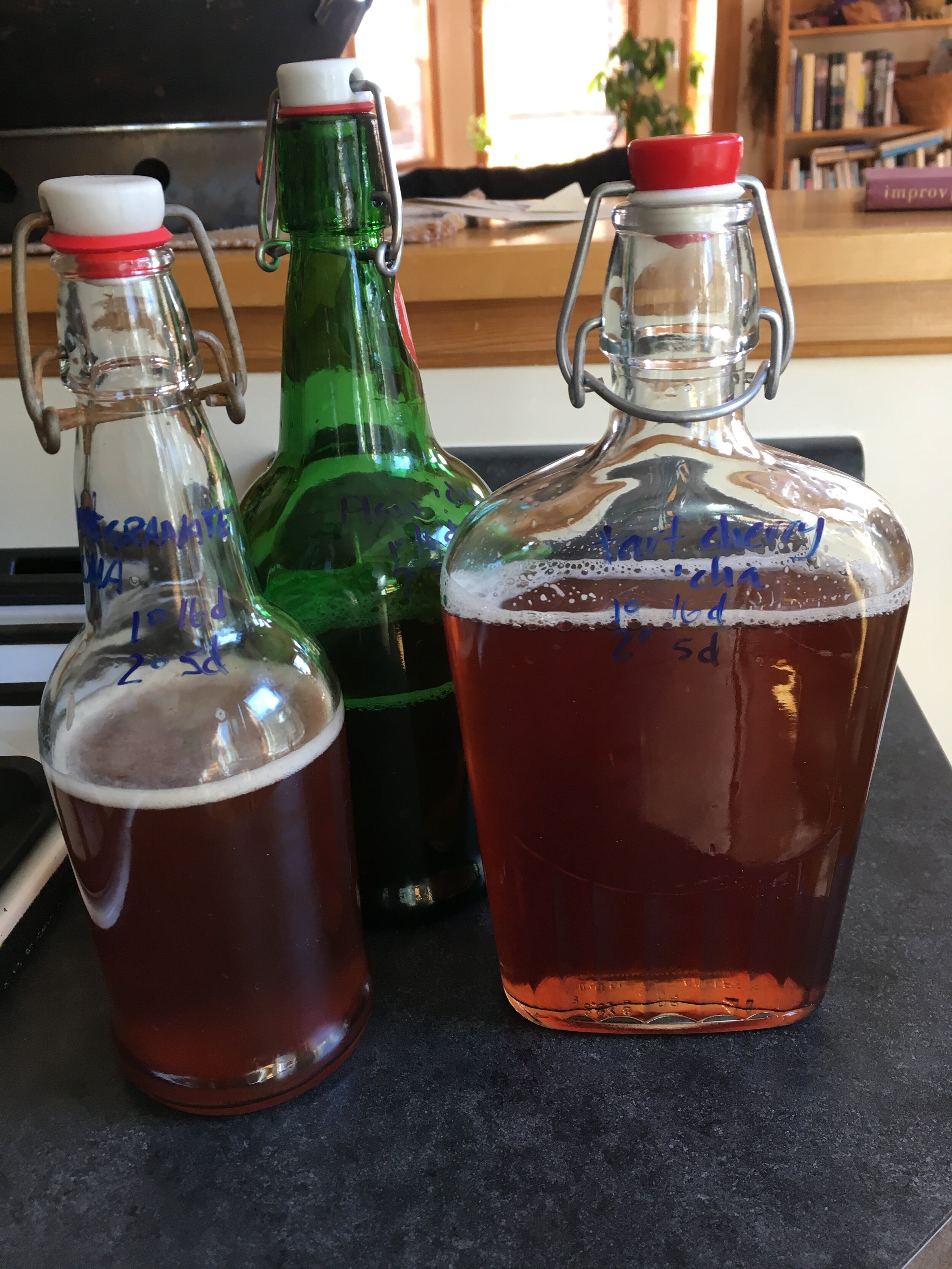Everyone is walking around with a $4 bottle of kombucha these days. High end kombucheries abound, offering flights and flavors, the hempy-hipster version of the fermentation evolution, following in the path of breweries and distilleries. What’s the deal with this beverage? And what the heck is that weird thing floating around in a vinegary jar anyway?
Kombucha lore is a bit misty, but it is an ancient ferment that may date back centuries, possibly from Manchuria. The word kombucha may have come from a Eastern doctor’s name (Kanbu) treating a monarch with tea (cha), or possibly a misnomer from the Japanese ‘Konbu’ (seaweed) and ‘Cha’ (tea), though it is not based on seaweed at all. It’s also known by Russian names tea kvass or gripe (gree-peh). Though erroneous perhaps, here it is commonly known as kombucha, so we may as well stick with it now.
Kombucha is made by adding a SCOBY (Symbiotic Culture of Bacteria and Yeast, it looks a bit like an unappetizing rubbery pancake) to sweetened black or green tea and allowing it to ferment. I have spent a good number of hours nerding out about the particular microbes found in this thing, but to summarize, the SCOBY floats on top of sweet black or green tea and it’s resident bacteria and yeasts digest the sugars, (just like wine). It puts out a little alcohol (ends up at 1% typically), a lot of acetic acid (which is what gives it the vinegary characteristics) and many other byproducts. The incubation can last 5 days to 2 weeks, and is best between 70-85F. A shorter incubation time (or lower temperature) will keep more sugars undigested and create a sweeter kombucha. Conversely a longer fermentation time or higher temperature will allow the SCOBY to convert more sugar into acetic acid, resulting in a more sour beverage.
Why drink it? Though scientific studies are still coming in, there is something to be said for a product that is low in sugar, actively probiotic, hydrating, easily and economically home-sourced, and a tasty alternative to alcohol. Other benefits touted (described in experiments of giving diabetic rats kombucha) are improvements in liver and kidney function. There are reports of B and C vitamins and some other beneficial byproducts of the SCOBY’s metabolism of the sugar. As with many fermented foods and beverages, I think it is an acquired taste - I seem to have acquired it.
**Late breaking quick tip! If you wish to decaffeinate your kombucha, simply pre-steep your tea for 30 seconds in a cup of boiling water, then drain the water which will contain 50-70% of the caffeine (can be used to water plants, once cool). Finish making your kombucha with the now lower-caffeine tea leaves. Dont use “decaffeinated tea” because it is decaffeinated chemically and there may chemical residue in the tea leaves that you will ingest.
home made kombucha

